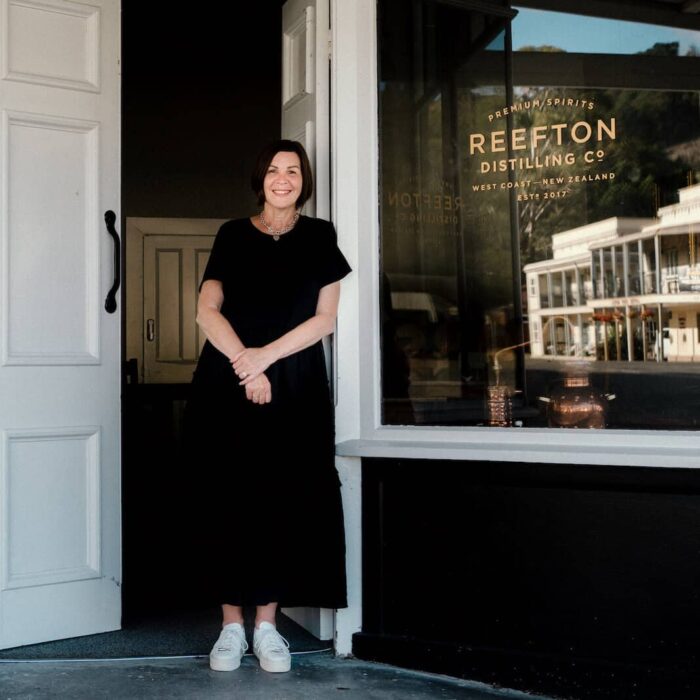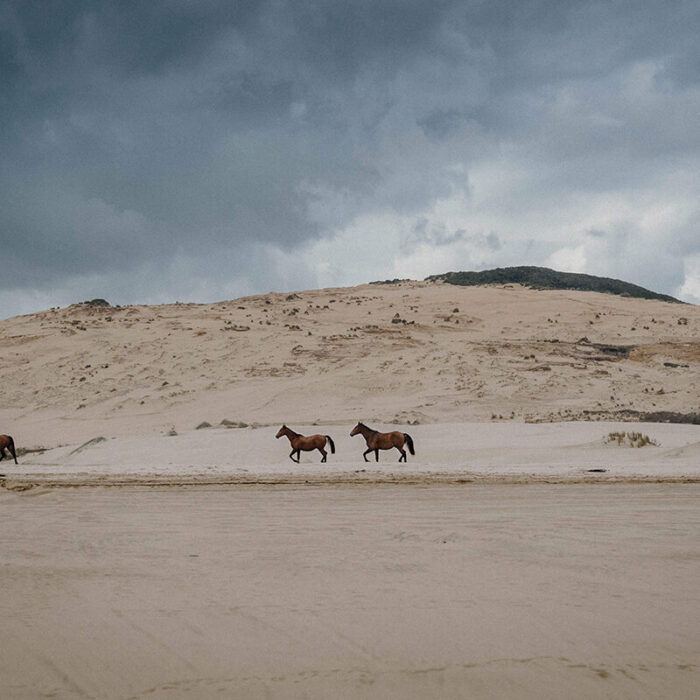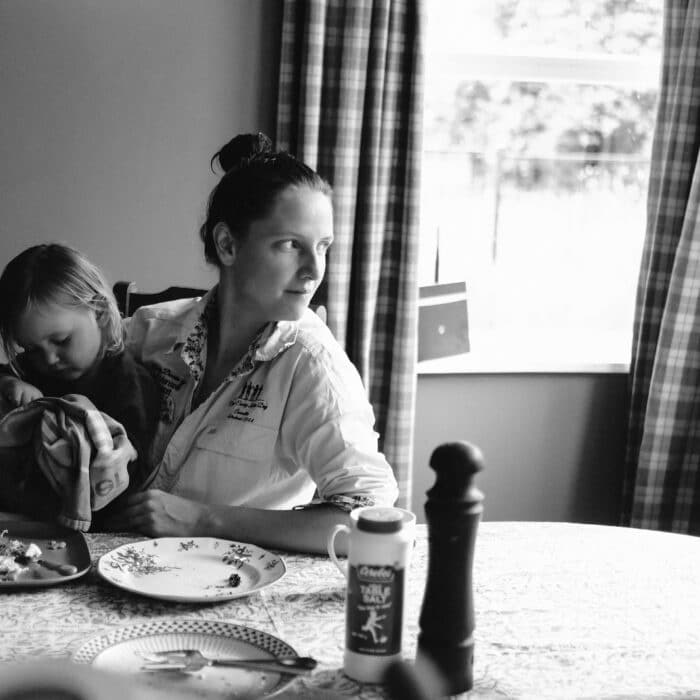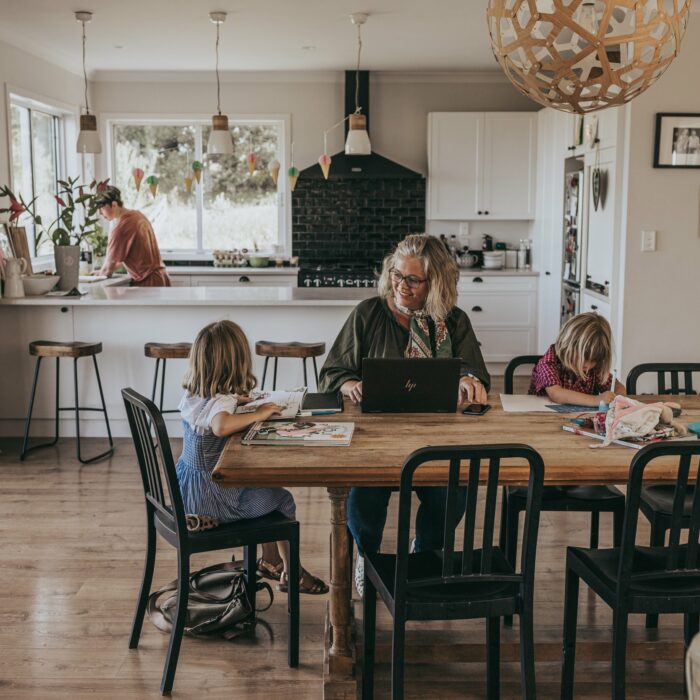
I hesitate to call Hau Botanicals a business because it’s something that nourishes me so much. It came about as a result of an imbalance I was feeling. I was a Type-A perfectionist and focused on Western models of science because of the nature of my job as an environmental consultant. Something was missing, but it wasn’t until I ended up in bed for four straight months with burnout that I really realised something needed to change.
During that time of recovery, I went to the ngahere and that allowed me to feel a sense of calm and being grounded. I sat in the bush and had to learn how to be slow for the first time in my life. I had recently lost two pregnancies and, as I began to recover, the heavy loss I felt pushed me to create something. That energy of creative power is the foundation of Hau Botanicals. I launched Hau Botanicals in September 2018 and four months later I discovered I was hapū with my daughter, Matatū.
During my time of recovery, I studied with Pā Ropata McGowan and Donna Kerridge, who are two living giants of te ao rongoā Māori. Training with Donna and Pā was such an affirmation of what I was intuitively being drawn to on my own, and that I could trust my connection to te taiao. I found so much healing from being in the ngahere that I was sure other people could benefit from that connection too. Hau is about creating but it’s also about learning and sparking a person’s curiosity. I really love sharing my knowledge and observations from nature.
The two key plants I work with for the Hau Botanicals products I make are kawakawa and koromiko. My usual practice begins with karakia. I ask for permission and for tohu on how to proceed. It takes practice to tune into the whisperings of the ngahere – to see, hear, feel and trust that what you are receiving is tika.
One time, a friend asked if I had a particular rongoā for her. I didn’t, because the plant required is not so easy to find where I live. A few days later, a large pēpepe flew down into my path while I was in the ngahere. I followed as it dipped down a bank, and there was the plant I needed to make the rongoā for my friend. He tohu, koina.
On the other end of the spectrum, I once arrived home from the bush only to turn around again and return what I had harvested that day because what I had collected wasn’t quite right. I’m not an expert. Mistakes happen and I’m always learning. Tikanga is the most important principle of what I do with Hau. I only make small batches at a time, which can be a little frustrating for some. I am guided by the maramataka, so if it’s raining, or if life happens, I may not harvest at all some months. It’s not about making a mass of products or making money.
I have a bachelor’s degree in zoology and ecology, but my first job in the sector left me feeling very disillusioned as there was little to no understanding of kaitiakitanga and there was a real lack of involvement of Māori. It raised a lot of questions in my mind and led me to take on a master’s degree in science, with a focus on understanding how mātauranga Māori and science work together to restore health to our native wetlands. Now, my other mahi alongside Hau, is with a rōpū of Māori scientists at Manaaki Whenua Landcare Research, where we support iwi and hapū in their aspirations for te taiao.
The birth of Hau – and Matatū – helped restore balance to my life. My approach to science is now led by kaitiakitanga and my work with Hau is underpinned by the customs and practices I hold so closely in my work with rongoā and my creativity as a māmā.
My daughter has spent half her life outside. It’s a beautiful thing to be able to share all of this with her and she teaches me so much. To slow down and see things from her perspective, which is closer to the ground, to look up and examine things much longer than I usually would. I now notice the small things that I’d normally walk straight by in my day-to-day life, but her fascination becomes mine. She’s too small yet to help me with my rongoā practice, but she is almost always with me when I collect from our native rākau. Her presence in itself becomes part of the medicine.
Glossary. Hapū to be pregnant or subtribe. Hau vital essence. He tohu a sign. Iwi extended kinship group, people, tribe. Kaitiakitanga guardianship. Karakia, prayer. Kawakawa, a native tree with heart-shaped leaves. Koinā that is. Koromiko a native shrub. Māmā mother. Mana wahine, strong woman. Maramataka the Māori lunar calendar. Mātauranga knowledge. Ngahere bush, forest. Pā respectful term of address for an older male. Pēpepe moth. Rākau plant, tree. Rongoā Māori Māori medicine. Rōpū group. Te ao rongoā Māori the world of Māori medicine. Te taiao the natural world, the environment. Tika to be correct, true. Tikanga a customary system of values and practices.
This story appeared in the Kōnaga Spring 2021 Edition of Shepherdess.
Related Stories
The Gin Genie
Nestled amongst the spectacular Paparoa and Victoria ranges, Reefton is home to the eponymous Reefton Distilling Co., founded by local Patsy Bass.
Ahipara
Like a lot of coastal towns in Aotearoa New Zealand, Ahipara is remote, but its community is vibrant and strong.
Mastering the Juggle
Gretchen King runs a successful business delivering her farm recording app to clients nationwide, while also being a dedicated stepmum and mum to four children.
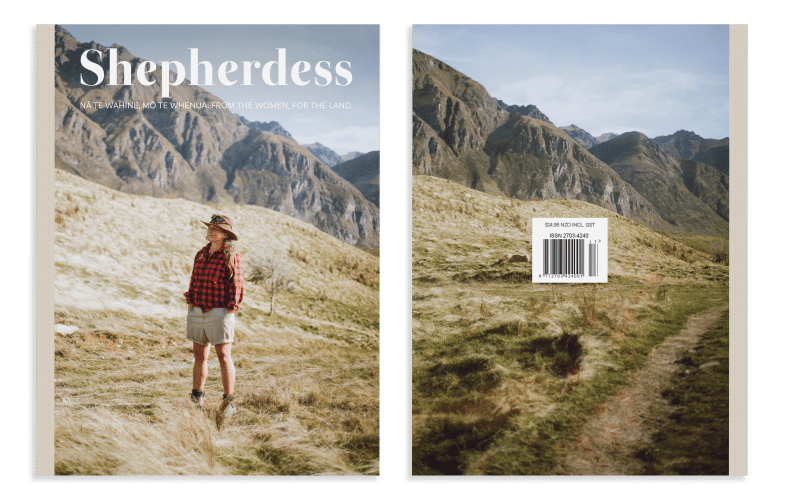
Out Now
Seventeenth Edition
Our beautiful Ngahuru Autumn 2024 Edition is out now!
